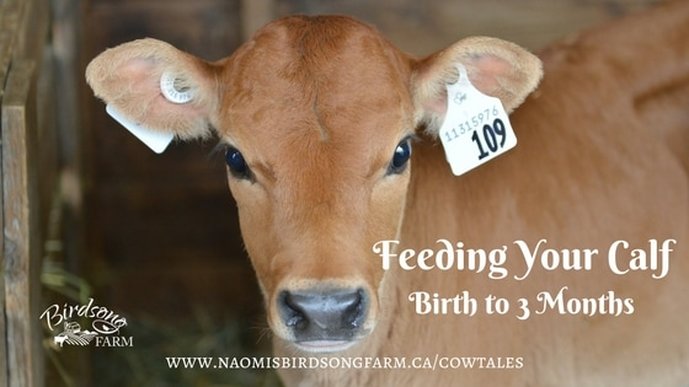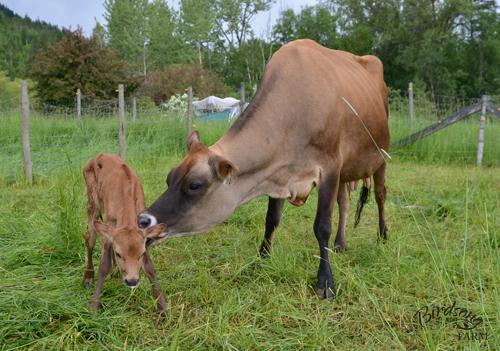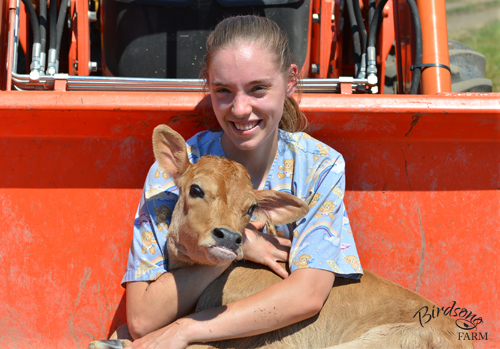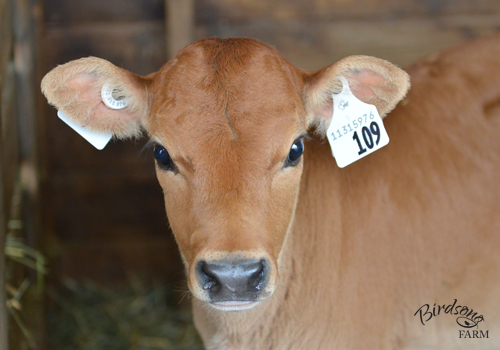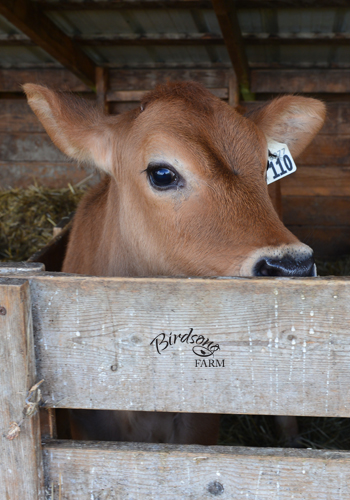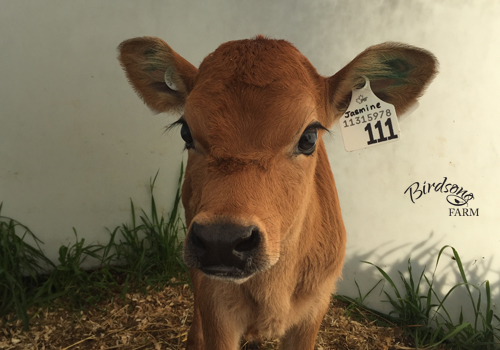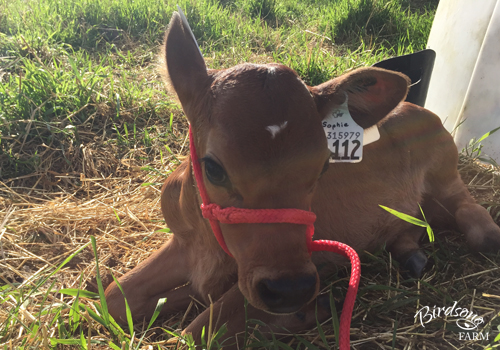|
I'm doing research on the best calf feeding program for raising my Jersey heifers, and since I've received quite a few requests about the best way to raise calves I'm going to share my research with you in this month's CowTales post. The 1st DayNewborn calves require at least 4 quarts of colostrum within 12 hours of birth, and I try to get the calf to drink at least 2 quarts within the first 60 to 90 minutes. I milk the cow while she is cleaning off her new baby and rewarm the colostrum to between 35° and 38°C (95° to 100°F) before feeding the calf. I love the Peach Teats products for feeding my calves. The calf nipples are really great because they mimic a cow's teat for natural nursing, and the 2-quart nursing bottle makes the first few feedings a breeze. In cold weather, you may want to cover the new baby with a calf blanket after she is completely dry to keep her warm. My fleece calf blankets came from Calf Cozy; other brands recommended by dairy farmers were Genex, Accelerated Genetics, Udder Tech, and Select Sires. The 1st WeekFor the first week I offer the calf 6 quarts of milk a day, split between two or three feedings, remembering to warm the milk to between 35° and 38°C (95° to 100°F) first. The calf might not drink all the milk, but I'm not worried about that if she is alert and drinking at least 3 to 4 quarts of milk a day. I keep a small bucket of fresh water in the pen with the calf and change it daily, as well as a small bucket with a couple handfuls of grain. Calves are always so curious and will often start to drink water and nibble on grain before they are a week old. If you live in Canada, your calf should be tagged by the end of the first week, and ideally within the first 24 hours. You can read my CowTales post Tagging Your Jersey Calf, Part I to learn about tagging. The 1st MonthBy the time the calf is a week old she should be drinking 6 quarts of milk a day, split between two or three feedings, and I keep feeding that for the next three months. You can keep bottle feeding your calf or switch to a nursing bucket like the reversible 6-quart calf feeder from Peach Teats, or teach her to drink from a bucket. Grain is critical for good rumen development, so if the calf is not nibbling on her grain by the end of the first week I will stuff a small handful in her mouth after she is finished drinking her milk. She will quickly learn that grain tastes really yummy and start eating it on her own. Target weight at 30 days: 93-103 pounds (42-46 kilograms) Target height at 30 days: 29-32 inches (73-81 centimeters) The 2nd MonthYour calf should be eating at least 1 pound of grain a day by this point. After the calf is eating at least 1-1/2 pounds of grain per day, you can begin offering a good quality grass hay; second or third cut is ideal. Target weight at 60 days: 122-146 pounds (55-66 kilograms) Target height at 60 days: 30-33 inches (76-83 centimetres) The 3rd MonthA calf can be weaned at 8 to 12 weeks of age if she is eating at least 3 pounds of grain per day, but I will often feed my calves milk for an additional month. Target weight at 90 days: 155-177 pounds (70-80 kilograms) Target height at 90 days: 32-34 inches (81-86 centimetres) You can keep track of your heifer's growth for the first two years with these printable growth charts from PennState Extension. I really like how they've made a chart for each of the six major dairy breeds (Holstein, Jersey, Brown Swiss, Guernsey, Ayrshire, and Milking Shorthorn), so I easily check that my heifer's growth is on target for her age and breed.
I'd love to learn about how you raise your calves; please share in the comments below.
13 Comments
Tracy
10/7/2016 11:28:21 am
Naomi, why do you choose 90 days (3 months)?
Reply
10/7/2016 04:02:25 pm
Hi Tracy,
Reply
Richard
23/8/2020 08:49:40 am
HI
Reply
24/8/2020 04:45:13 pm
This post isn't available in a PDF format at this time, but that's a great idea! I'm wanting to update this post with a few new resources, so I'll add a PDF download along with the update.
Reply
Amanda
7/9/2020 01:55:49 pm
Very helpful! Thank you for sharing your research and how you do it. That really helped this newbie out.
Reply
12/9/2020 11:43:25 pm
Thanks, Amanda! I'm glad that you found this helpful!
Reply
Angela
8/9/2020 05:43:53 am
Why do you bottle feed the calf? Why can’t the calf just nurse from the cow?
Reply
12/9/2020 11:44:36 pm
Many families with a milk cow choose to calf share (allow the calf to nurse and milk the cow once or twice a day), but I prefer to bottle feed my calves for several reasons.
Reply
Pamela B Boehme
27/12/2020 10:02:13 am
I have a minature Jersey , so the numbers would not apply to me.
Reply
27/12/2020 10:14:44 am
This post was never advertised as a feeding program for miniature Jerseys, but if you wanted to adapt it to them, you could adjust the amounts you feed based on body weight. For reference, the average Jersey calf weighs 60 pounds at birth, with a normal range of 42 to 72 pounds.
Reply
Holly R. Chisholm
27/6/2021 05:11:38 pm
Exactly what kind of grain do you give your calves? I have a little 3-week-old miniature jersey who so far is drinking a gallon of whole milk a day and nibbling on weeds and Bernita grass.
Reply
Melissa F. Bishop
6/1/2024 03:15:14 pm
Reply
23/7/2024 09:07:28 am
Great tips on feeding calves! I raise teacup mini cows and found this very helpful. At Mini Cow, we focus on the special needs of teacup mini cows. They need good nutrition just like bigger cows, but in smaller amounts. Your advice on colostrum and feeding schedules works well for our mini cows too. For more info on raising these tiny cows, check out our guide on our minicow.us. Thanks for sharing!
Reply
Leave a Reply. |
Categories
All
Archives
January 2020
|
